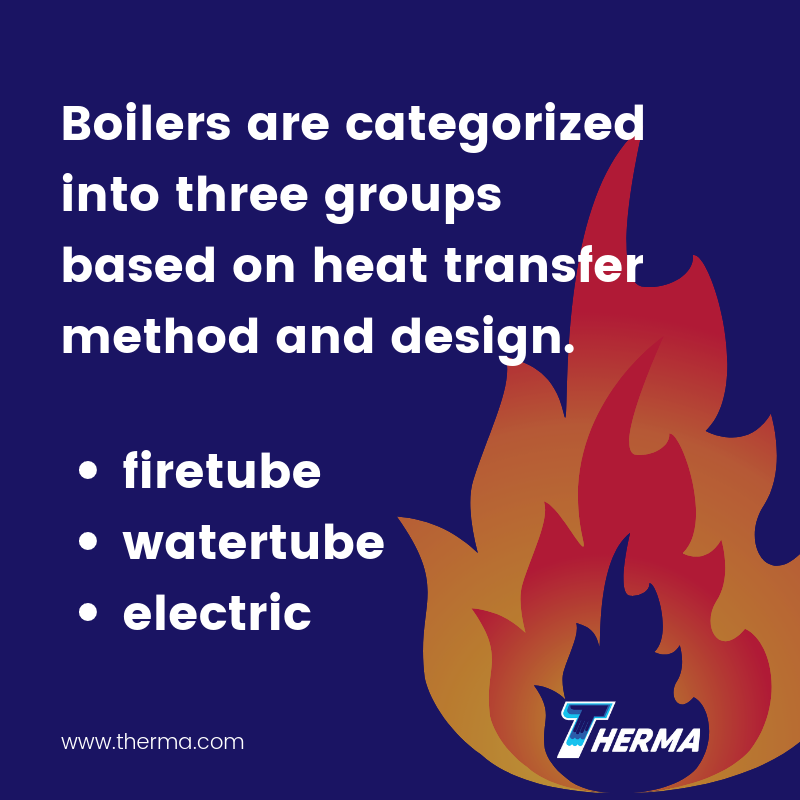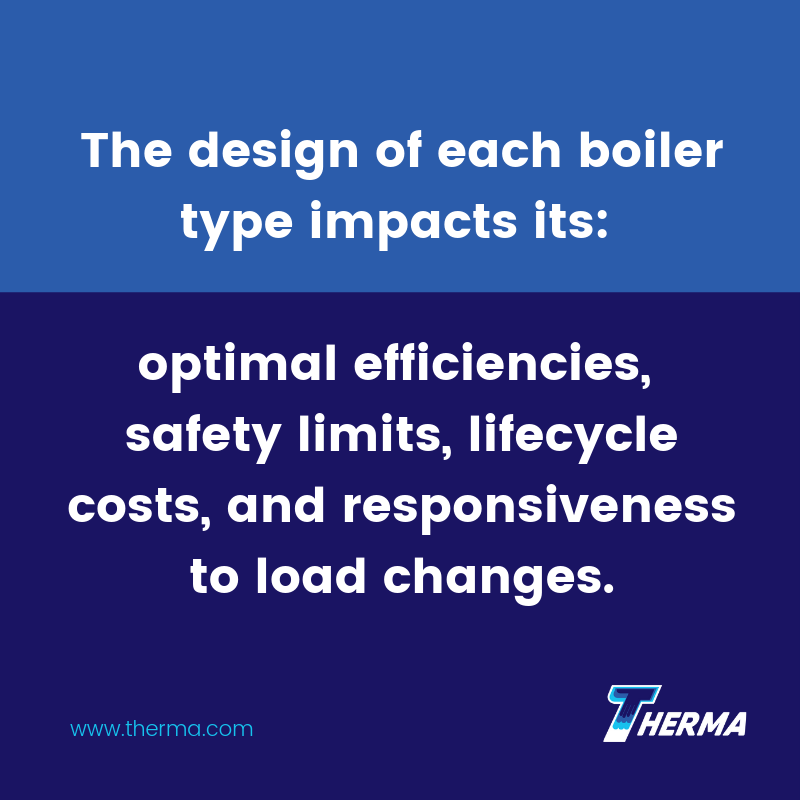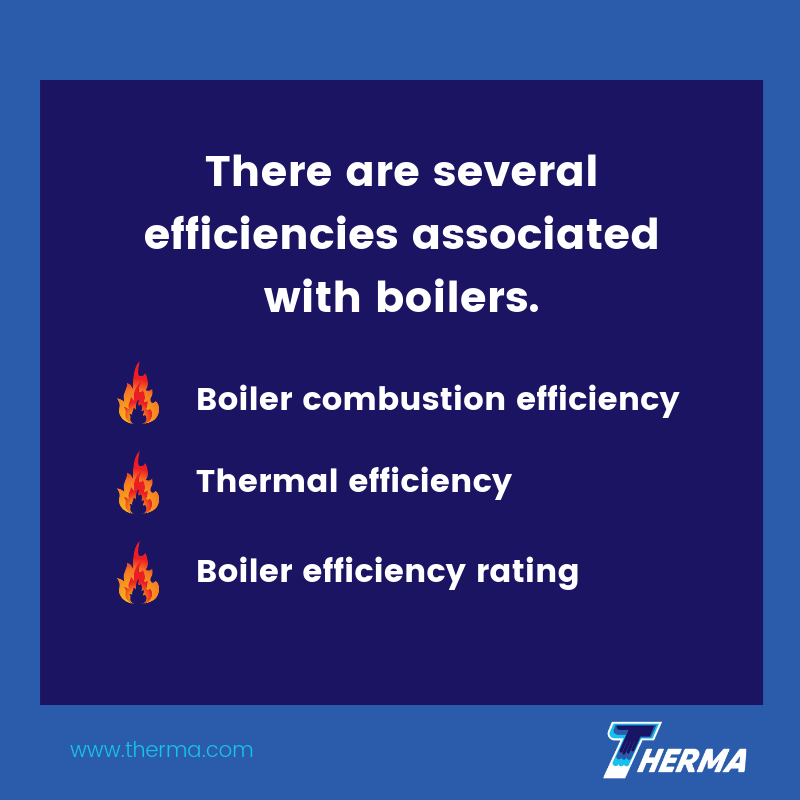By Patti Dees
Commercial boilers are a staple for providing hot water or steam for large institutions and buildings. Applications range from space heating to manufacturing processes. With a wide range of usefulness, choosing a boiler system is a balance of desired design characteristics and efficiency ratings.
A Brief Boiler Breakdown

Boilers are categorized into three groups based on heat transfer method and design: firetube, watertube, and electric.
Firetube and watertube boilers rely on combustion for heat. The general design for both incorporates burner equipment to generate the heat, and pressure vessels containing heat exchanger tubes. The key difference between them is what passes through the tubes.
Combustion gases carry the heat through the tubes of firetube boilers. The heat transfers to the water on the vessel side of the tubes. Watertube boilers have water flowing through the tubes, with the combustion gases on the vessel-side of the tubes.
Electric boilers transfer heat from electric heating elements to water inside a pressure vessel. Since there are no combustion gases or byproducts to deal with, exhaust flues are not required.
Choosing the Right Boilers

The design of each boiler type impacts its optimal efficiencies, safety limits, lifecycle costs, and responsiveness to load changes.
Firetube
- The tubes are trying to heat a large quantity of water.
- The large amount of water or steam stored in firetube boilers reduces the chance for disruption in service if load demands tend to spike.
- Not suggested for steam pressures at or above 350 pounds per square inch gauge (psig).
Watertube
- Watertube boilers have a smaller water to combustion gas ratio than firetube boilers; therefore, these boilers can produce steam more quickly. They are good for variable load demands.
- The smaller amount of hot water and steam in the tubes is also safer in case of damage to boiler components.
- Watertube boilers can provide high quality steam and handle higher pressures than firetube boilers.
Electric
- With no combustion involved, electric boilers have no emissions or stack requirements.
- Since there is no need for combustion equipment, they take up less space.
- Electric boilers are quiet.
- Cost analysis should include impact of local electricity costs.
CleaverBrooks, a boiler manufacturer, provides a more complete look at boiler selection in Boiler Selection Considerations.
Talk About Efficient

There are several efficiencies associated with boilers. Key components will have their own efficiency rating. Learn the measurements on which each efficiency is based, and use them to optimize boiler selection.
Boiler combustion efficiency: how effective the burner is at turning the fuel into heat energy
Burning all the fuel that enters the combustion chamber reduces waste, but more importantly, it makes the process safer. The burner needs excess air to ensure that all the fuel is consumed. The amount of excess air needed depends on the type of fuel, and can be anywhere from 5 to 20% more than that theoretically needed for the fuel source to be completely exhausted. However, using more air means that some of the energy produced goes to heating the excess air instead of the water. Safety versus efficiency is a fine balance between burning all the fuel and limiting heat loss.
Thermal efficiency: how effectively heat transfers to the water or steam in the boiler
Thermal efficiency does not account for losses from boiler radiation and convection from shell and piping. It focuses only on the heat exchange within the boiler shell. The more heat kept within the boiler, the more heat is available for transfer to the water or steam.
Exhaust gas is very hot and carries roughly 30% of the boiler’s heat with it. One option that recovers heat from flue gases is a condensing boiler. Water is one of the byproducts of combustion. By condensing the water from the gases, the recovered heat improves the boiler’s thermal efficiency. However, the condensate formed is acidic. The materials required to resist corrosion are generally more expensive, so upfront costs are higher than for non-condensing boilers.
Boiler efficiency rating (also fuel-to-fluid efficiency): the overall efficiency of the boiler
Fuel-to-fluid efficiency accounts for losses from radiation, convection and excess air and stack temperature. Because of this, some consider the boiler efficiency rating to be the most accurate measure of efficiency. It is calculated either by a heat balance including losses or by dividing the energy out by the energy in.
Consider building or process needs when choosing the best boiler, then look for the most efficient system within budget. The Department of Energy has issued standards regarding the minimum efficiencies for boilers based on type, size and fuel source. Efficiency can only go up from there.
References
- https://midwestmachinery.net/5-things-you-need-to-know-about-commercial-water-boilers/
- http://cleaverbrooks.com/reference-center/boiler-basics/Boiler%20Selection.pdf
- https://www.engineeringtoolbox.com/boiler-efficiency-d_438.html
- https://www.engineeringtoolbox.com/boiler-combustion-efficiency-d_271.html
- https://www.hvacrschool.com/boiler-basics-part-1-types-and-components/amp/
- https://appliance-standards.org/product/boilers-commercial
- https://www.ecfr.gov/cgi-bin/text-idx?SID=7cc7e61cad1f0a474009880d24a8d553&mc=true&node=se10.3.431_187&rgn=div8







